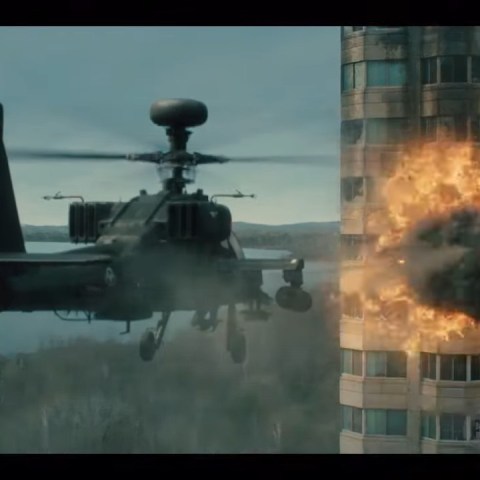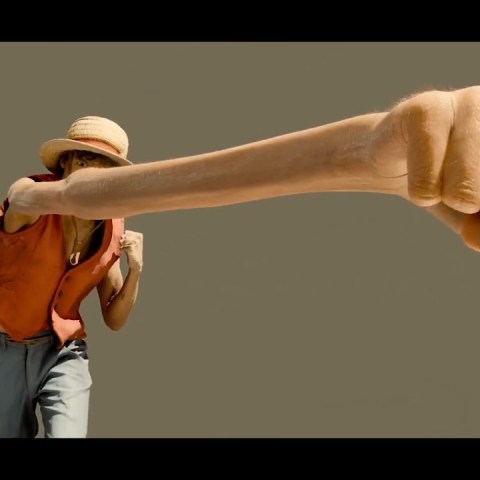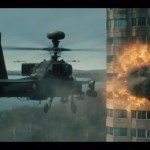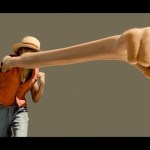Framestore took the domesticated bishop’s claw in Foundation to a new level. Read this excerpt from issue #13 of befores & afters magazine.
In season one of the Apple TV+ series, Foundation, the creatures known as bishop’s claws are seen as wild animals on the planet Terminus. By season two, some 150 years later, the feline-like animals have been domesticated, with one bishop’s claw in particular, Beki, being center stage this series.
The character Brother Constant (Isabella Laughland) keeps Beki as a pet, and rides her. Ultimately, Beki is seen much more up close than in season one, and eventually engages in a fierce battle on Trantor, and an unfortunate end.
This increase in screen time meant, of course, a revamp of the season one asset, a task undertaken by Framestore, which worked with production visual effects supervisor Chris MacLean on the character.
“Beki was an Amro Attia concept that production designer Rory Cheyne had done up, and then Lorena E’vers did the CG sculpt on her in season one,” outlines MacLean. “That then got handed off to Framestore and they upgraded the asset for season two.”
Design time
Framestore was involved early on in Beki scenes via its FPS visualization unit, overseen by visualization supervisor Michelle Blok. This previs work was then able to be carried through directly to final visual effects shots. “We had the opportunity to take their scene and camera and use that as a base for us to build on,” says Framestore visual effects supervisor Laureline Silan. “Michelle is a very talented supervisor and she has a good view on the storytelling and what the client wanted.”

In coming up with the look of a now hero Beki, MacLean notes that “it was all about reference. It was looking at cats, it was looking at panthers, it was looking at whatever version of a cat we could find doing whatever action we wanted Beki to do, whether it was her running or drinking water or being alerted to something above her. Obviously, we would have to make changes based on her physiology because she had two extra mandibles that could be used for attacking and things like that.”
“Production wanted in season two for the audience to create a bond with Beki,” adds Silan. “It took a lot of discussion and time and methodology to see what we could do to this asset to make it work first as a hero character with a proper walk and run cycle, but there was also the part where we had to make it look sympathetic so you could actually feel sad when she died. Beki’s look was complex in that both needed to appear as a friendly presence to those close to her and as menacing to those threatening her inner circle.”
“At the same time, you have this spiky dinosaur tail that she needs to carry that doesn’t behave at all like a cat tail,” notes Silan. “She also has those huge mandibles that we needed to add, and those mandibles were there to create some defense because she’s very protective.”
The eyes were another important design component. Beki has 10 red eyes that needed to be a mix of scary and empathetic. Says Silan: “We worked closely with the animation department and the rigging department to see how and where we could actually build muscles on the face and how we could redesign the eyes.”
“With its increased role in the new season’s storyline, we added a lot of facial controls to be able to convey emotion in the scenes,” describes creature supervisor Dave Gagnon. “For example, we had to invent a breathing technique that both complemented and expanded upon her existing alien features.”
Framestore paid close attention, too, to Beki’s mandible area. ‘’We put a lot of effort in refining the creature’s appearance and functionality while being faithful to the original,’’ adds Gagnon. “In order to achieve appropriate deformation, we went for in-depth validation of the underlying anatomical structure.”
‘He had just become a big cat’
Since Beki is ridden and also interacts extensively with human characters (including attacking and grappling with them), MacLean undertook to shoot live-action scenes for the creature with as much real-world interaction as possible.

For riding scenes, a buck that had been utilized during the making of Game of Thrones was employed, but turned sideways. “It was a hose buck they had left over,” states MacLean.
“Everybody tried to do the forward motion version of it, but because Beki moves like a cat and not like a horse, they don’t have that same locomotion. We took the buck, turned it sideways, and built a proxy version of Beki that Isabella Laughland could ride.”
Scenes of Beki on her own were filmed with a stand-in stunt performer. “Chris out stuntman was a big guy,” recalls MacLean. “I didn’t think when we cast him that he was going to be the right guy. And then he came in and he had the performance down for that kind of movement. He had just become a big cat. He would carry around this giant gray head we had on a pole in a gray gimp suit and he nailed it every time.”
“Everybody appreciated it because they had something to interact with on set,” continues MacLean. “I think that’s something that is very important, is to make sure that when you’re doing CG characters or CG creatures, you’ve got some sort of stand-in that the actors can interact with. Otherwise, they don’t know where to look and don’t know what to do.”
For the rest of this story, find out more in issue #13 of befores & afters magazine, which covers VFX creatures.


















